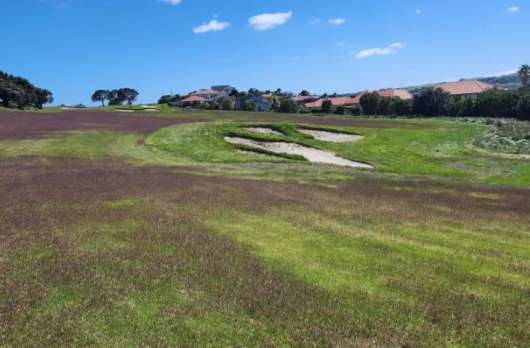[PHOTO: Gary Lisbon]
The rising desire to annex golf-course land for housing appears to have claimed another ‘victim’, this time a high-profile layout in New Zealand.
Gulf Harbour Golf & Country Club, which occupies a stunning isthmus location on the Whangaparāoa Peninsula, north of Auckland, is facing an unwelcome fate in a similar manner to several suburban courses in Australia. The New Zealand Herald reports that the Robert Trent Jones Jnr-designed course closed in July and in the four months since has been left to slide into a state of disrepair.
The Gulf Harbour situation comes at a time when two Sydney courses – Moore Park and Cammeray – are facing partial reduction or closure, with a similar noose potentially hanging around the neck of Melbourne’s Oakleigh course – although in each instance due to council input rather than an owner/developer.
The course that Australian Golf Digest ranked as the 18th-best in New Zealand before its closure is now a shadow of its former glory, which was impressive enough to see Gulf Harbour host the 1998 World Cup of Golf and successive New Zealand Opens in 2005 and 2006.
The New Zealand Herald quoted Frazer Bond, Gulf Harbour’s former director of golf, who shared photos and painted a troubling picture of the golf course.

Photo: Frazer Bond
“To see how fast it went downhill is unreal,” Bond said. “When you go from a strong membership of around 600 or 700 to see just no one there, it was nuts. [The grass] is long as, but I saw a few people playing out there when I went out.
“It’s unreal. Those indoor photos, it just looks like people walked out one day like when we had the COVID lockdowns. A bunch of suppliers have come and grabbed all their stuff and some companies got as much as they could like two or three days after [it closed] and then they locked the doors.”
The decline began when current owner Greg Olliver took over Gulf Harbour in 2021 and reached its nadir this July when he shut the course. The closure was announced by Wayne Bailey, the director appointed to control Olliver’s company, Long River Investments. Bailey said he had been “unable to make the running of the club viable” and that it would shut “with immediate effect”.

Photo: Gary Lisbon
New Zealand news website stuff.co.nz reported in August that locals on the Whangaparāoa Peninsula suspected it was part of Olliver’s plan all along to transform the 92-hectare golf course into a residential enclave of about 3,000 houses.
Shortly after Olliver purchased Gulf Harbour, he was banned from being a company director for four years by the Registrar of Companies over an $NZ836,000 earthworks bill that went unpaid, stuff.co.nz reported.
Writing in a blog on thegolfcompany.co.nz, star amateur-turned author Geoff Saunders opined: “Looking back over the troubled 25-year history of the course, permanent closure of Gulf Harbour may have been inevitable. From inception, Gulf Harbour has suffered under a series of owners with little genuine interest in either golf or the members. Deferred maintenance and faulty membership structures have not helped the cause. In 1997, Mr Goh established the club. Member shareholders paid $25,000 for a membership interest and carried a subscription liability in perpetuity.
“Gulf Harbour may be in the right place but is fast becoming a monument to the wrong owners arriving on the scene at the wrong time.”



